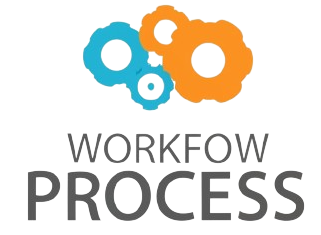Character.ai implements age restrictions to protect teens in AI chatbot interactions
As AI chatbots become more sophisticated and widely used, concerns about the safety and well-being of younger users have intensified. Character.ai, a popular platform offering AI-driven conversations with diverse fictional and real characters, recently introduced age restrictions designed to safeguard teenagers during their interactions. This new policy aims to create a safer environment by managing access based on age verification and content moderation. In this article, we will explore the reasons behind these age restrictions, how Character.ai implements them, and the broader implications for both users and developers in the AI industry. Understanding these measures is crucial as AI chatbots continue to integrate into social and educational landscapes.
Reasons for implementing age restrictions
The primary motivation for introducing age restrictions is to protect teenagers from exposure to inappropriate or potentially harmful content. AI chatbots, while engaging and helpful, can sometimes generate unpredictable or sensitive responses. Without safeguards, teens might face conversations that include mature themes, misinformation, or even harmful advice.
For example, imagine a 14-year-old user interacting without limits and receiving content about violence or adult situations. Age restrictions help prevent such scenarios by limiting access or filtering the dialogue based on verified ages.
Another reason is regulatory compliance. Laws like the Children’s Online Privacy Protection Act (COPPA) require platforms to implement stricter controls to protect minors’ privacy and safety. By enforcing age checks, Character.ai aligns with these legal frameworks and sets a responsible precedent.
How Character.ai enforces age restrictions
Character.ai uses a combination of technical and procedural strategies to confirm users’ ages and control content access. When new users sign up, they are prompted to enter their birthdate. For users below the specified age threshold (often 13 or 16 years), the system restricts access to certain chat features or content categories.
Beyond initial verification, algorithms monitor conversations for sensitive keywords or phrases to dynamically restrict or modify responses. This dual approach ensures ongoing protection rather than a one-time check.
Consider a practical case where a 15-year-old wants to engage with a chatbot character that simulates an adult figure. The platform’s filters detect the user’s age and automatically adapts the bot’s responses to avoid inappropriate topics, ensuring a safer interaction without a complete ban.
Impact on user experience and community safety
Age restrictions inevitably affect how users interact on the platform. Some teens might feel limited in their conversations, yet this trade-off is essential for their protection. On the other hand, parents and educators gain confidence that AI interactions are monitored and curated appropriately.
Community safety improves as the platform minimizes risks such as cyberbullying or exposure to harmful advice. This creates a more welcoming environment for younger users, encouraging healthy exploration of AI tools.
For instance, a school integrating Character.ai into its curriculum found that the age-restriction system helped students focus on educational content without distraction or exposure to unsuitable material, enhancing the learning experience.
Broader implications for AI chatbot developers
Character.ai’s implementation sets an important example for the AI development community. It highlights the growing responsibility developers have to balance innovation with ethical concerns, especially when their tools reach vulnerable groups like teens.
Other companies are now exploring similar safeguards, such as layered content moderation and adaptive AI responses, to create safer user environments. This trend pushes the industry toward more transparent, responsible AI usage.
| Key considerations | Character.ai approach | Example |
|---|---|---|
| Age verification | Initial birthdate input; ongoing content filtering | 15-year-old receives age-appropriate chat replies |
| Content moderation | Keyword monitoring and response adaptation | Blocking mature themes during teen interactions |
| Legal compliance | Meeting COPPA and similar regulations | Restricted data collection for underage users |
Conclusion: creating safer AI chatbot spaces for teens
Character.ai’s introduction of age restrictions marks a significant step toward safer AI experiences for teenagers. By focusing on protecting younger users through age verification, content moderation, and legal compliance, the platform addresses key risks associated with open AI conversations. These measures enhance the quality of interactions and build trust among users, parents, and educators alike.
Moreover, this approach encourages responsible AI development industry-wide, emphasizing the ethical challenges inherent in serving varied demographics. While some teen users may find restrictions limiting, the benefits of a safeguarded environment outweigh temporary inconveniences. Ultimately, Character.ai’s policy promotes healthier engagement with AI chatbots and sets a model for balancing innovation with protection in an increasingly digital world.
